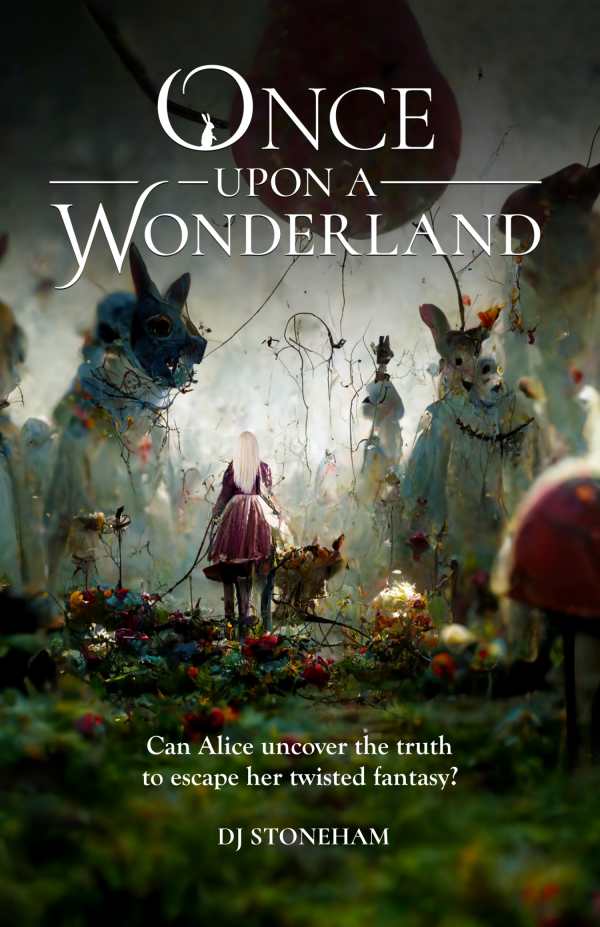Once upon a Wonderland
Juxtaposing whimsy and seriousness to innovative effect, Once upon a Wonderland refreshes classic tales and seeks untold stories.
Fairy-tale characters infiltrate Lewis Carroll’s fantasy realm in DJ Stoneham’s novel Once upon a Wonderland.
Now a young woman, Alice is thrust back into Wonderland for a fourth time. During a prior adventure, she fell in love with Jack, a feathered boy. In her initial search for Jack and a way back home, Alice encounters fantastical creatures and people including the Cheshire Cat, the spindly, slimy Eelers, and the Marquis de Carabas (the enemy of Puss in Boots).
At first, Alice’s meanderings are casual and conversation filled. Soon, she realizes that her impossible fourth visit to Wonderland has unhinged time in the fantasy world. She undertakes a challenge to right time, but as she drifts back and forth between the past and the present, she grows younger and younger. If she can’t fix the problem before she ages backward into nothingness, Wonderland will be left in eternal chaos.
Alice is rendered as a determined and curious heroine who asks probing questions about her fairy-tale companions’ stories. Cinderella and Rapunzel are among those who retell their tales, casting them in a stark new light: Cinderella asserts that liars with ulterior motives changed her story, misportraying her beloved sisters and the conniving prince, whose ball she never wanted to attend. Pessimism is introduced at the same time, with Cinderella observing, “If you tell people what they want to hear, they’ll believe anything.”
However, the book’s fairy-tale characters are introduced in quite quick succession. They remain in scenes just long enough to correct misconceptions about their stories. Their comings and goings lead to a jolting pace. While each character’s personality is whole and interesting, most of them possess similar traits, including grumpiness and resentment toward those who wronged them. Righteous, ambitious Alice aims to help each person resolve their grudges—against Puss in Boots, the Mad Hatter, and a whole slew of degenerate princes—alongside her missions to get time flowing the right way again and to find Jack. She collects problems to fix faster than she can solve them, but her hope never falters.
Just as in Lewis Carroll’s novel, these characters often admit they are insane, which complicates the plot if also bolstering its humor and absurdity. Wonderland’s inhabitants speak with the same amusing trickster language and double-talk as is in the original. Their conversations sometimes break the fourth wall to playful effect. Still, the tone remains lighthearted, even when Alice faces dark challenges and hears brutal backstories.
Balancing trauma, effervescence, lies, and reconstructed truths, Once upon a Wonderland is a fantasy novel that plays with storytelling; it’s an exhilarating continuation of classic tales.
Reviewed by
Aimee Jodoin
Disclosure: This article is not an endorsement, but a review. The publisher of this book provided free copies of the book and paid a small fee to have their book reviewed by a professional reviewer. Foreword Reviews and Clarion Reviews make no guarantee that the publisher will receive a positive review. Foreword Magazine, Inc. is disclosing this in accordance with the Federal Trade Commission’s 16 CFR, Part 255.

